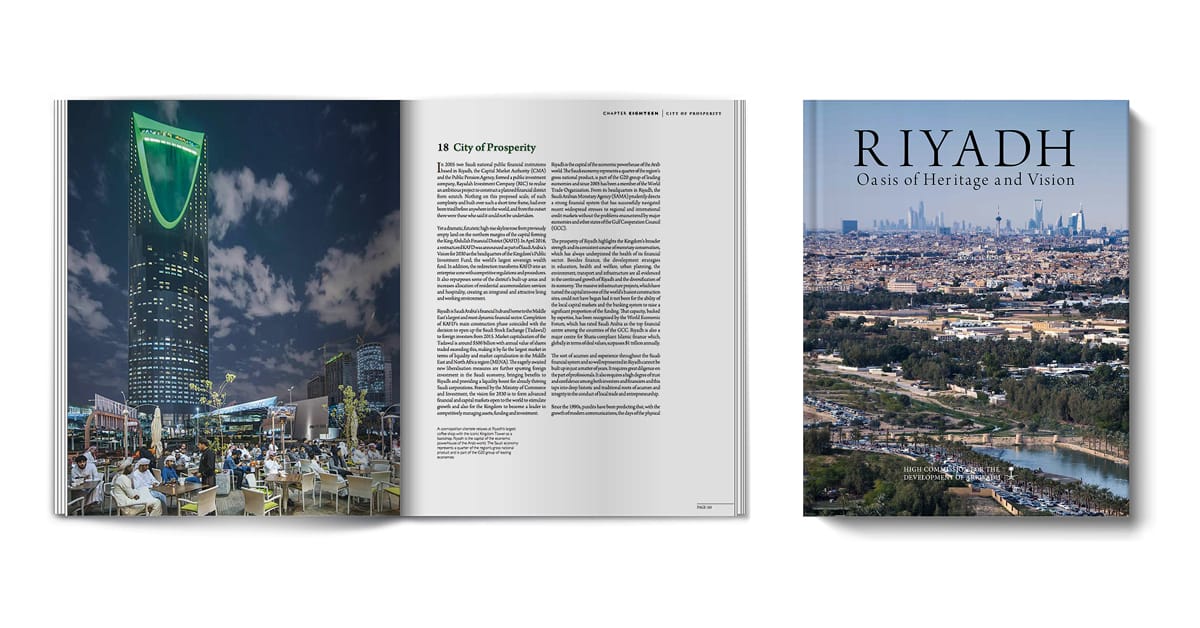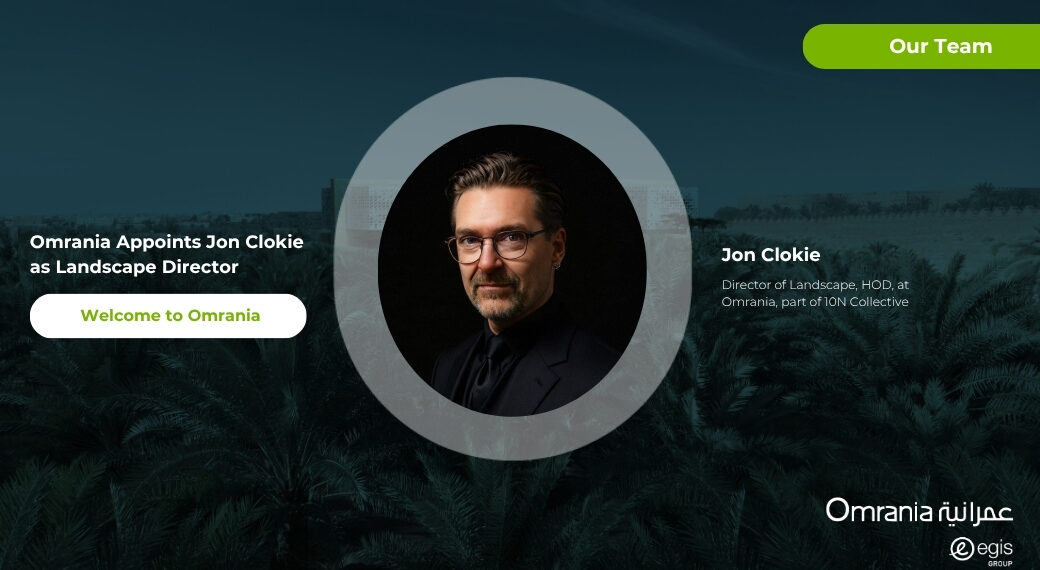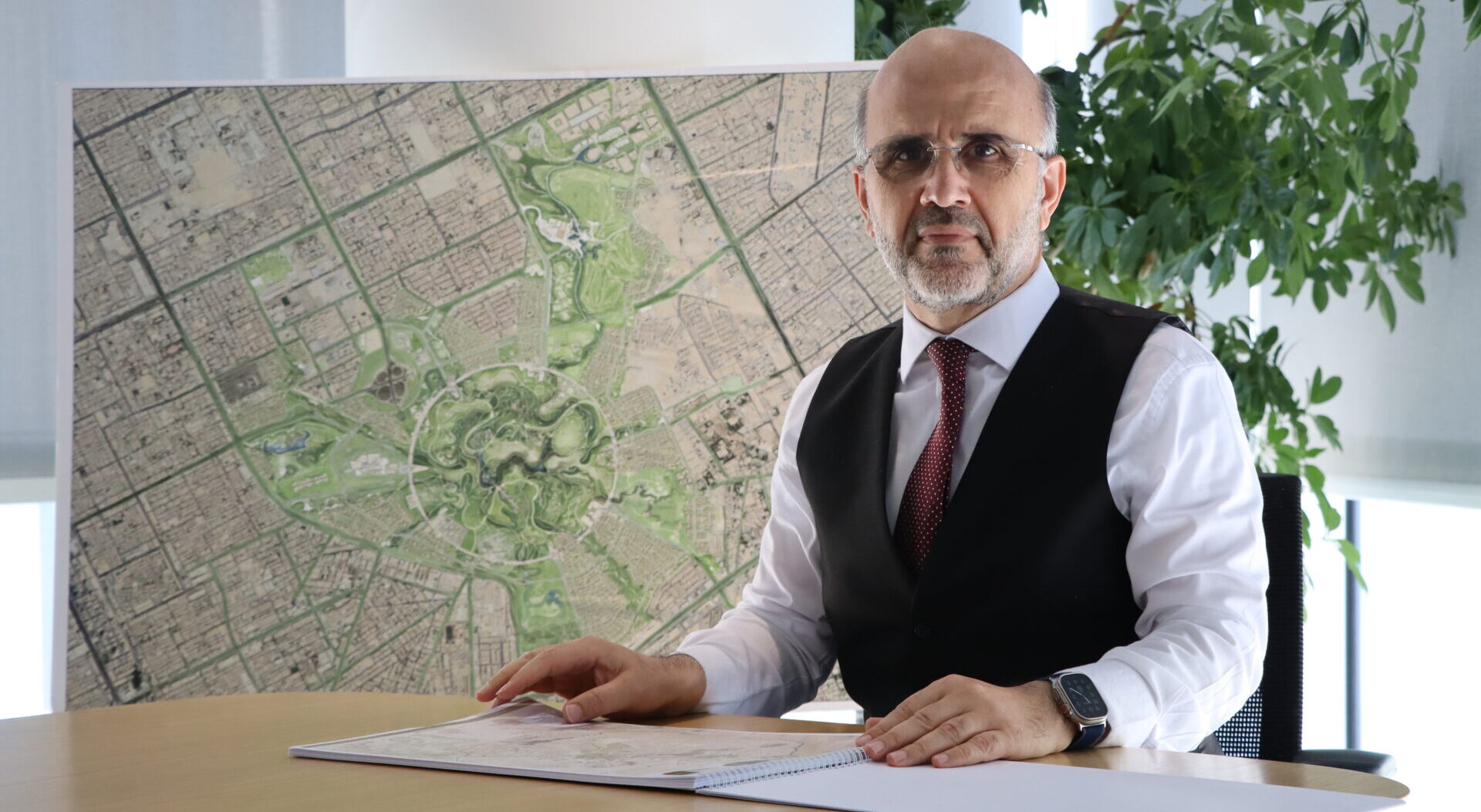 The new book, “Riyadh: Oasis of Heritage and Vision,” provides much-needed insights into the past, present and future of the growing Saudi capital. Several Omrania projects are included.
The new book, “Riyadh: Oasis of Heritage and Vision,” provides much-needed insights into the past, present and future of the growing Saudi capital. Several Omrania projects are included.
.
Riyadh, Omrania’s home city, has grown at a breakneck speed over the past few decades. Yet much of the world remains unaware of both its deeper heritage and its bold future, as projected in Saudi Arabia’s Vision 2030. A new book offers a wealth of information and imagery.
Riyadh: Oasis of Heritage and Vision, describes Riyadh’s history, development, and increasingly prominent role on the global stage. Written by Peter Harrigan under the auspices of Arriyadh Development Authority, the book may surprise some readers unaware of Riyadh’s recent urban achievements and deeper legacy.
The book traces the city’s development from an ancient oasis situated along major trade and pilgrimage routes, to capital of the First and Second Saudi States, through its rapid growth during the 20th century into a modern metropolis under the leadership of King Salman bin Abdulaziz. The reader is introduced to various urban planning and cultural initiatives in contemporary Riyadh, some of which, like the environmental conservation and public space improvements along the Wadi Hanifah valley, have earned international recognition and awards. There are full-spread photographs and descriptions of vibrant and thoughtfully designed places, such as Kindi Plaza and other public spaces in the Diplomatic Quarter, which embrace local design traditions from contemporary point of view. Omrania’s fingerprints can be seen in the discussion of several successful projects including Salam Park and the Tuwaiq Palace.
Though the book reflects the unique perspective of the planning authorities, it is highly informative and provides a much-needed resource to anyone interested in the urbanism, architecture, and other aspects of Riyadh. It shows that the city is more than just a global and regional economic powerhouse, as leaders have focused resources on the cultural and environmental realms. In this timely portrait of a youthful city, Riyadh remains anchored to time-honored Islamic principles and national heritage, while looking ahead to exciting possibilities for the 21st century.
To read the book, please visit the ADA’s website at http://ada.gov.sa/idc/groups/public/documents/AR_ADA_Prints/007388.pdf

















